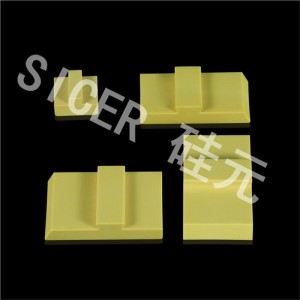Al2O3 Bulletproof Ceramic Plate
Short Description:
Production Name: Al2O3 Bulletproof Ceramic Plate
Application: Military Apparel/Vest
Material: Al2O3
Shape: Brick
Product Detail
Product Tags
Basic Info
Production Name: Al2O3 Bulletproof Ceramic Plate
Application: Military Apparel/Vest
Material: Al2O3
Shape: Brick
Product description:
Al2O3 bulletproof plate is sintered under high temperature and it’s alumina content reaches 99.7%.
Advantage:
·High hardness
·Good wear resistance
·High compressive strength
·Excellent ballistic performance under high stress
Products Show


Introduce:
Bullets, fragments, stabbing with sharp objects – today’s high-risk professionals must contend with an ever-increasing range of threats. And it’s not just military and law enforcement personnel who need protection. Around the world, prison guards, cash carriers and private individuals all put their lives on the line for other people’s safety. And they all deserve first-class protective solutions. Whatever the environment, whatever the threat, our materials are developed with one objective: maximizing safety. With our innovative ballistic vest materials and solutions, we help deliver enhanced protection to users. Day after day, year after year. Meanwhile, we are also setting new standards for stab- and spike-protection products – with materials that offer unrivaled puncture and cut resistance. All while reducing weight. All while increasing comfort and enabling freedom of movement. You can be sure of that.
Such plates of uniform thickness are typically made by axial pressing to shape. In case of the alumina and silicon carbide hexagons, the bevel may be formed during the shaping process or by subsequent grinding. Parts must be perfectly flat and within narrow dimensional tolerances to reduce machining effort. They also must be completely dense, as internal porosity would reduce hardness, stiffness and ballistic performance. Inhomogeneous green density from the surface to the center of the pressed part would cause warping or inhomogeneous density after sintering. Thus, the requirements to the quality of the pressed green bodies are high. To eliminate residual porosity, such materials are frequently post-HIPed after conventional sintering. Other manufacturing processes may also be applied but will not be economically competitive to mass production by axial pressing.







